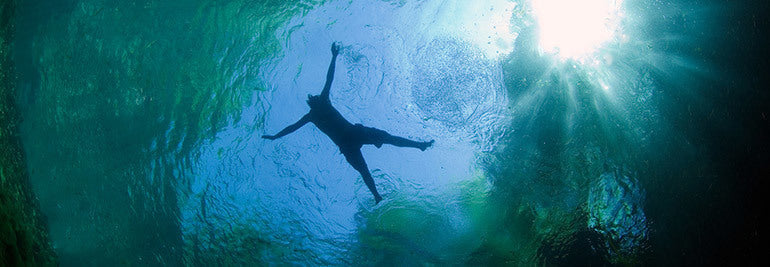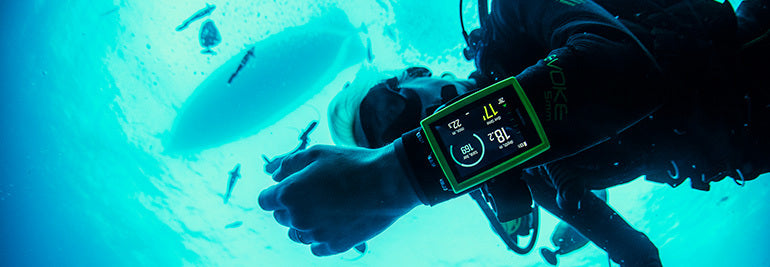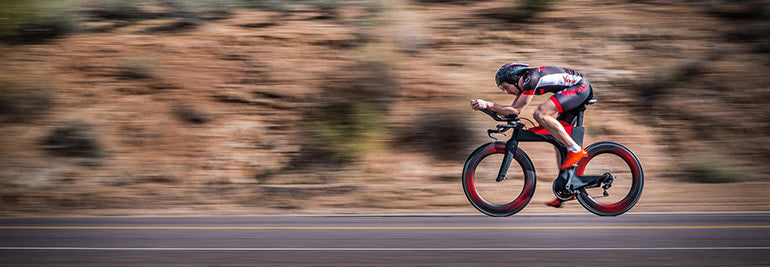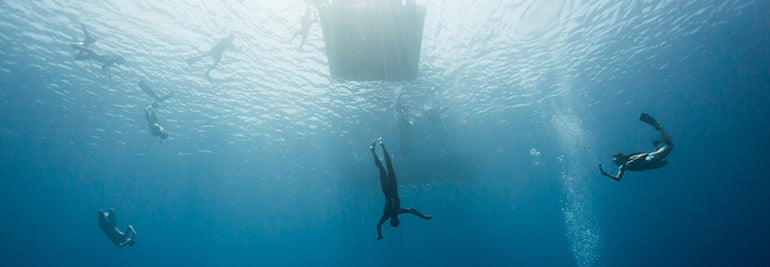

Suunto Blog

Fuelling the engine: a commonsense approach to nutrition
Eating well is essential for athletes. The bigger your goal, the more nutrition has to play a central part of your training plan. Take shortcuts on how you eat, and you’ll eventually pay for it.
But the topic of diet, what we should and shouldn’t eat, has become touchy and confusing. There are all sorts of diets out there – paleolithic, vegan, gluten-free, low carb, high carb – each one with advocates claiming their way is the one true way.
Matias Anthoni prefers a common sense approach to nutrition.
“Nowadays it’s become a big topic, and everyone has his or her own opinion, and it seems hard to find the real truth,” says Matias Anthoni, Suunto’s in-house personal trainer. “It’s become trendy to follow a kind of diet.”
Anthoni, 26, has a Bachelor in Sports and Health Promotion, and gives nutritional advice to Suunto employees, as well as personal fitness training. He takes a simple, “nonsectarian” approach to nutrition, rather than buying into the hype of one diet over another.
“As long as you get the nutrients it doesn’t really matter what diet you follow,” he says. “You can teach your body to thrive on different diets. The body is quite adaptable. But we do need certain basics. The question I always ask is, would my grandma recognize it as food?”
Here are Anthoni’s five down-to-earth tips for good nutrition:
1. Start with your meal rhythm
This is the first topic Anthoni’s raises with his clients during a consultation. Just improving how often you eat can improve what you eat. Many of his clients skip meals or have long breaks between meals; this results in blood sugar levels dropping, then tiredness, and then cravings and impulses for unhealthy snacks.“With a more steady meal rhythm you avoid big spikes in the blood levels, make better decisions, and are less likely to just reach for a chocolate bar,” he says.
Meals should be about three hours apart, and consist of a good breakfast, lunch and dinner, with smaller, healthy snacks in between. “It leads to healthier choices and you’ll have more energy,” Anthoni says.
2. Plan ahead
“You can’t be a top athlete if you are eating poorly; it’s not just about training, it’s about eating as well,” Anthoni says. “It really helps if you plan your meals like you plan your training. Know what you are going to buy and know what you are going to make. When you come home from work, or after a training session, it’s all ready to go.”
3. Follow the Nordic plate model
Anthoni says in Finland there’s a traditional “plate model” or a way to divide your plate into three sections: one half should be salad and vegetables, one quarter should be carbohydrates, and one quarter protein. This balanced plate ensures you will get enough of all the key nutrients.
4. Eat quality food
Quality can seem like a vague notion, so Anthoni recommends a common sense approach here, too. “Have a look at your plate – are there all the colours – red, green, yellow?” he asks. “Are you eating the same thing every day?” Anthoni suggests finding and following basic nutrition guidelines. “They provide a good start, and then make small changes to fit yourself from there,” he says.
5. There’s no one size fits all diet
Deciding what to eat depends on your goals. “The more you move the more you need,” Anthoni says. “If your goal is building muscle mass, then you need more protein. If you are an endurance athlete, eating enough carbohydrates becomes more important. There is no one size fits all, no one plan can fit everyone. You need to have your own plan.”
Lead image: Photo by Roosa Kulju on Unsplash.
READ MORE
Fuelling the engine: talking nutrition with ultra runner Lucy Bartholomew
Fuelling the engine: talking nutrition with triathlete Mel Hauschildt

Committed to protecting the oceans together – Suunto joins Mission 2020
We are committed to protecting the environment and preventing pollution in our operations.
"Our guiding principles are the use of sustainable materials, reduction of waste, reduction of energy consumption and co-operation with the supply chain to foster human rights and working conditions," says Erika Rautavaara, Sustainability Manager at Suunto.
The most visible part of the responsibility are, in fact, our products.
"We only design and manufacture durable devices that can be used for a long time in very demanding conditions. In addition, all our equipment can be repaired, and maintenance and repairs can be easily done anywhere in the world. This is very exceptional in the world of electronics."
Juha Ala-Laurila, Dive Business Unit Director at Suunto, points out that responsibility work is a never-ending task.
"We are on a path that goes forward and changes its shape as the world around us changes."
Right now, we are expanding our responsibility operations beyond the limits of our own business.
"The plastic waste in the oceans is a huge problem, and, as a part of the diving community, we want to be involved in solving it," Juha says.
Mission 2020 sets targets
We participate in Mission 2020, a global initiative by organizations within the diving community to change their business practices in order to help protect and preserve the oceans for the future. Every company in the Mission 2020 community has agreed to make a binding commitment.
"Suunto commits to minimizing single-use plastics in the packaging and to select durable materials to ensure a long lifetime for products and capability for maintenance. We also commit to optimize deliveries and compensate carbon emissions from all deliveries. Through our certified and audited environmental management system we are and continue to be committed to save our common playground," Juha says.
With a primary focus on single-use plastic, the project sets ambitious short-term targets of changes to be made before World Oceans Day 2020.
"In the future, all our actions, operations and messages must be environmentally credible", Juha says.
Net-zero is not enough
Divers see the damage caused by human activity on the ocean environment more clearly than anyone else.
Many divers are also committed to solving the problem. One of them is Suunto Ambassador Jill Heinerth, a pioneering Canadian-American underwater explorer and filmmaker. She says that diving companies have a unique opportunity to lead the responsibility work by example in their daily practices.
However, diving companies have also more wide-spreading opportunities.
"Diving companies meet new environmentally-curious customers every day. Dive briefings can have an environmental message, and manufacturers can employ responsible packaging and process ethics. It is not just enough to talk about "net-zero" carbon impacts. We have to lead with net-positive actions," Jill explains.
"If we all talk about those efforts and recognize organizations that have a good ethic, then we can spread the word. Education, process and activism are all important prongs in the environmental ethic."
Daily choices affect ocean health
The problems associated with plastics, climate change, and water quality are massive.
"But I have to believe that we have hope to turn the tide. We don't have the luxury of time anymore. Action has to be swift and bold. Every consumer needs to downsize and vote with their wallets. Whether that means buying local, reducing packaging or making product choices that support the environment, every action will help," Jill says.
In her projects, Jill Heinerth has studied the importance of water to all of us.
"The most important message that I want to convey is that the issues we see in the ocean are connected to our everyday lives. Everything that we do on the surface of our landscape will eventually affect our water systems including the ocean. Choices we make in our daily lives affect ocean health. The effort to using fewer drinking straws is admirable, but it is just a start. We need to seek out alternatives to any plastics and move to use natural, biodegradable products as much as possible, even if they are more expensive. We need to lose the love affair with the golf course style lawn and stop using fertilizer, pesticides, and insecticides on the ground as much as possible. Those materials soak into the ground and flow toward water bodies creating massive algal blooms that kill wildlife and sicken people just like we are seeing in Florida right now."
www.IntoThePlanet.com
www.mission2020.org
All images: © Jill Heinerth
READ MORE
Ocean plastics are a problem and no one knows better than divers
Under thin ice: Jill Heinerth captures climate change

“Losing diving is like losing a limb”: Gemma Smith’s scrape with death and her incredible recovery
© Jukka Saarikorpi
Surgeons and specialists who’ve carried out 12 operations and other procedures on 27-year-old Gemma Smith since a car crashed into her have been astonished at how quickly she has recovered. Smith believes it’s in large part due to the massive kindness and support she has received from the diving community.
Fellow divers, for example, created a fundraising page for Smith to help her with her long recovery. At the time of writing they have raised nearly $10,000 USD.
Click here to support Gemma.
“The biggest thing I want to say to everyone is thank you,” says Smith, the first woman to dive the world famous Antikythera Shipwreck. “The support I have received from all over the world, from many people I’ve never met, has been so mind blowing. It’s beyond what I could have ever imagined.”
© Nina Baxa
When an elderly man died of an aneurysm at the wheel while driving in the Faroe Islands in March this year, his foot slipped on to the accelerator and the car veered off the road and into Smith and her friend as they were walking home from the shops for a movie night together. Thrown four meters by the impact, Smith, lucky to have survived, woke up in hospital, completely unaware of what had happened.
She suffered a bleed on the brain, a broken neck, a broken coccyx, both legs and both feet broken. With two e coli infections, Smith nearly lost a leg. Doctors doubted she would walk again, let alone don scuba gear and drop underwater.
But Smith is walking again, going to rehabilitation twice a week, and training to fulfill physical requirements set by doctors before they will allow her to dive again. Her determination is unshakeable.
Listen to Gemma talk about why she dives in the video below
Smith started diving when she was 17. Since then, this is the longest she has gone without a dive, and it hasn’t been easy accepting that.
“Not being able to dive is like losing a limb,” she says. “It’s not just that I’m missing my hobby, but part of me is missing. I'm really lucky, and I will never forget how lucky I am, but at the end of the day, my overriding goal and aim is to get back in the water.”
The harrowing experience, the loss of her ability to dive, the outpouring of support she has received from the dive community, has shifted Smith’s vision of her future as a diver. Diving will always be her life, but now she wants to focus on sharing diving with people who could really benefit from its healing qualities.
“When something this random and out of the blue happens, you definitely reassess what’s important and what’s not,” Smith says. “Whereas before the accident diving was driven solely by exploration and discovery, what I wanted when I was lying in hospital for weeks was simply to get into a swimming pool and just have that quiet. “I learned to appreciate that more than I had done before.
“My focus right now is to look at how to help people with PTSD (Post-Traumatic Stress Disorder) or who have been in horrible accidents, or had horrible experiences, through diving. I want to give people the opportunity to experience the wonder, freedom and calming influence that diving can bring to your life.”
Over the next year Smith’s plan is to get dive fit. First it will be a single tank dive in a pool. Then baby steps from there. And despite a warning from a neurosurgeon not to start anything new, Smith couldn’t resist beginning a degree in archeology. “I thought, ‘if I can't dive, this is not the end for me, I'm going to come at it from an archeological point of view’,” she says.
Everyone at Suunto wishes Gemma a speedy recovery and a wonderful first dive.
Lead images: © Jukka Saarikorpi

Slaying his demons: A pro triathlete’s journey to finding balance
Right now 28-year-old Cody Beals is doing the thing he finds hardest in the world: nothing. The Canadian triathlete, from Guelph, Ontario, is chilling at the seaside on vacation, recovering from his best season ever as a pro.
In August, he came to the startline of Ironman Mont Tremblant, his first ever full distance race. He won it in style, setting the bike and overall course records in the process. Then six weeks later, he competed at Ironman Chattanooga, and won that too. He has won three 70.3 Ironman races this year.
Fans and followers have been pressuring Beals to strike while the iron is hot and smash another full distance Ironman this fall. Once upon a time, he might try just that. But he knows better now and says he is in no rush.
“I’m not going to get greedy,” he says. “It's been a great season, I've won five races. It's time for a good break right now. The reality is I'm still barely sleeping five hours a night, I'm still jittery and strung out, so it's time to call it a season. Doing those two races in six weeks really beats you up.”
© Bliiq
Beals is big believer in having balance and self kindness, both things he had to learn the hard way. Back in his university days he had neither.
When he graduated high school in 2008, he was top of his class and a District All Star in cross country. He began university with high aspirations. And, problematically, the impossibly high standards of a perfectionist.
He was top of his class in physics at Queen’s University, yet he isn’t proud of his academic performance because of the toll it took on him.
“I studied with a totally compulsive mentality,” Beals says. “It wasn't a worthy trade off because I had no balance. I was a hermit that trained and studied. I was beating up on myself.”
He also stopped dating, no longer able to feign interest in women, but not yet ready to accept his sexual orientation as a gay man. His social life disappeared and he sought the cold comfort of isolation. Anxiety began creeping into his body and mind, then disordered eating habits, low testosterone and insomnia all ensued. His response to this? Study and train even harder.
“I abused training as a way to self medicate,” he says. “And that led to overtraining because, like any drug, there is a dose-response effect; a little bit of training relaxes you, but too much is toxic.”
© Cody Beals
He battled on like this throughout his four years at university. After graduation, totally exhausted and frail, he realised something had to change.
While still at university, Beals decided to makel his life as an athlete transparent. He shared training data on his blog, wrote about his struggles, failures, ambitions and systems. He made his life naked for the public to see. His story caught the attention of someone who would prove to be a crucial figure in helping him transform his life.
“Realising I'd been a complete moron, I stopped self coaching, and hired a world class coach, ” Beals says. It wasn't really a decision I made; David Tilbury-Davis, a British coach, had to court me aggressively to convince me that he could help. With some trepidation I gave him the reins.”
It was one of the best decisions he’s ever made. With Tilbury-Davis’s counsel, he began finding balance. He overcame his eating disorder, regained good sleep habits, and stopped overtraining. More recently he came out as gay, something he says is not easy as an elite athlete.
© Craig Taylor
Now, with his life in balance, Beals ticks in a different way. Rather than being obsessed with results, chasing an illusory image of perfection, he revels in the process itself.
“Now what I love about this sport and the lifestyle of being a pro is my day in day out process,” he says. “I'm obsessed with finding enjoyment on a daily basis, and not hanging all my hope on some hypothetical accomplishment in the future, like the world champs or something.”
This is why he’s going to take his own sweet time in entering full distance Ironmans in the future. While he enjoys the training and tactical nature of 70.3 races more, Beals says he will build the rest of his career around full distance races. Just with a lot of respect for the sport and while keeping a balance.
“I'm going to make all my Ironmans ‘A’ races. If I show up on an Ironman startline it's because I'm trying to win. It will just be a couple a year, and I'll be doing a lot of 70.3 racing.”
Lead image: © Ventum

Drop below the surface into the depths with William Trubridge
Ask any freediver to explain what the experience of freediving is like and they will tell you words cannot do it justice. It's a transcendent sport – one that transforms our experience of the mind and our limits – and the subtlety of poetry is better suited to communicate what this unique experience is like.
“There’s nothing happening in your body that resembles any other sport or activity,” Suunto ambassador William Trubridge says in the video below. “What you are doing is perhaps the most alien thing the human body can do. Sure, if you went on a space walk, you are off the planet and weightless, but a free dive transforms you into another creature altogether.”
In the TEDx Talk below, Trubridge, who holds the world record for the deepest dive, guides his audience on a free dive, riffing poetically about the experience, how it feels, what happens to body and mind, and why he and other free divers are drawn away from the surface and into the deep.
Lead images: © Alex St Jean / Vertical Blue
Read more about freediving here:
How deep can we go?
You haven't understood free diving until you've read this.
William Trubridge talks record attempts and the art of freediving.

Fuelling the engine: talking nutrition with Melissa Hauschildt
Buying good quality and diverse produce and preparing nutritious meals is as important for our training as time spent running, cycling, swimming or at the gym. Yet, for many of us – especially for those of us with full time jobs and families – it’s tempting to cut corners when it comes to diet. We tell ourselves “next time”, and whip up a fast meal that fills the hole, but doesn’t fuel the engine.
Training is all about consistency and honesty. We shouldn’t try to fool ourselves; when we cut corners we don’t really gain in the long run. Instead, the training lifestyle is all about dedication to our sport, and the truth is, at the heart of that is caring for our bodies.
In this series of posts we explore how Suunto ambassadors and athletes keep their tanks fuelled. In this second instalment, we meet another Australian athlete, Melissa Hauschildt, an Ironman champion who recently set a new world record for fastest time (8:31:04) at the Ironman North American Championships, Texas in April.
The long term outlook
Good nutrition is a major part of Hauschildt’s life. Racing in Ironmans all over the planet, as the 35-year-old does, demands she feeds her engine with only the best fuel. “To be the best athlete I can I need to fuel my body correctly, but it's also important for life after sport,” she says. “I want to stay fit and healthy so I eat a healthy balanced diet.”
Maintaining good diet in busy times
Eating healthy can easily go out the window in busy times – how does Hauschildt maintain it? She prepares ahead of time. “I always have a healthy snack ready to go – nuts are always in abundance in my house, as well as bananas and apples,” she says. “I make almond butter and buckwheat bread at the start of the week so that’s always provides for great quick and easy snacks – almond butter and banana on toast or almond butter on apple.
“I also use Megaburn products. They make the best protein bars, with all natural ingredients, and so delicious! I always have a stack of them in the house. If I know it’ll take a while to make a meal after training, I will have a Megaburn protein shake immediately after so I can then take my time making a nutritious meal and not snack on junk.”
Natural is best
“I try to eat foods in their most natural form. I eat a lot of salad and vegetables, meat, nuts and eggs. I only eat full fat dairy. I make my own healthy treats as well, as my own bread and almond butter. I try to avoid packaged foods and refined sugar. I avoid soy, lentils, anything labeled ‘low fat’ or ‘diet’ and limit grains. I eat a lot of good fats - butter, olive and coconut oil, avocado, nuts, seeds, eggs.”
Easy, go-to meals
“My easy go-to meals tend to be a large salad with some meat. If I don't have any meat in the fridge I always have canned tuna and sardines in the cupboard or eggs. Another quick and easy go to meal for me is an omelette loaded with salad and left over meat or tuna.”
Kangaroo rice bowl
Ingredients:Wild riceKangaroo filletsRocketRed onionSnow peasTomatoShallotsCorianderAvocadoBlue cheeseOlive oilLime
Directions:
1. Cook rice to packet instructions. BBQ kangaroo fillets to medium/rare. Kangaroo gets very tough if overcooked. 2. Pre cut salads.3. Mix some olive oil and lime juice together for dressing. Grate some lime rind.4. Place cooked rice in bowl then arrange cut salads over it. Crumble some blue cheese on top. Sprinkle with lime rind. Pour over dressing.
Lead image: Photo by Ive Erhard on Unsplash.
READ MORE
Fuelling the engine: Talking nutrition with trail runner Lucy Bartholomew














































































